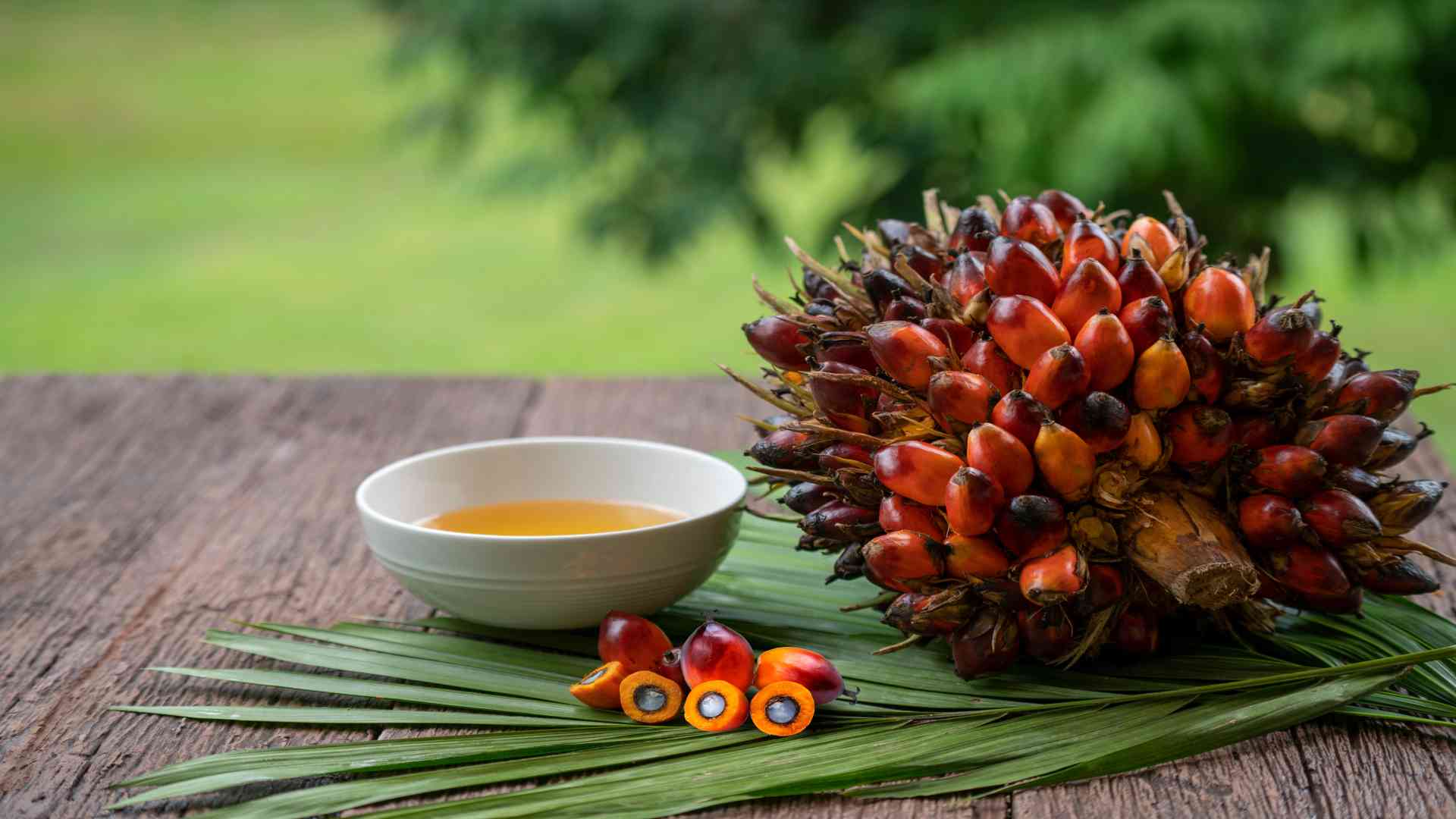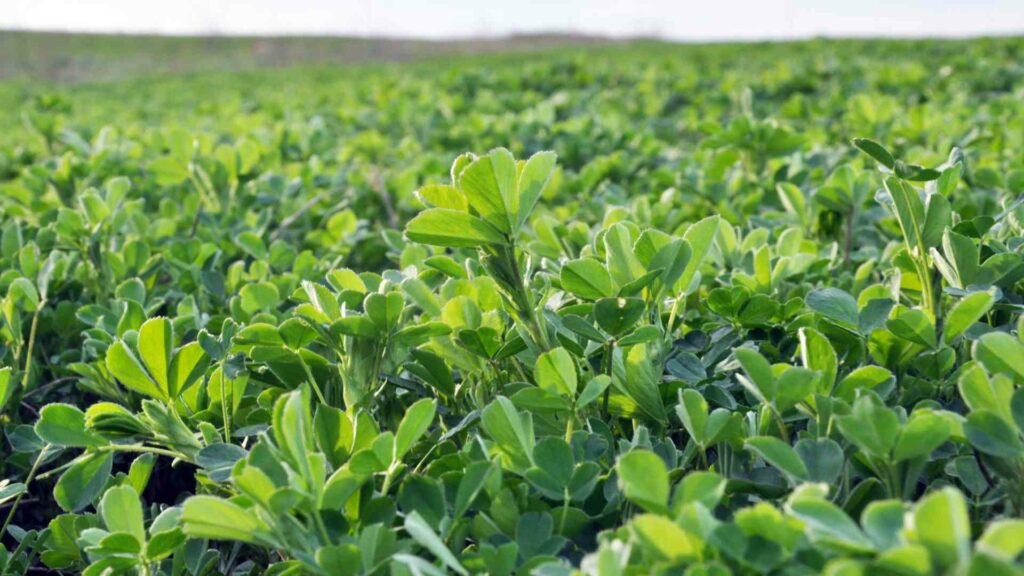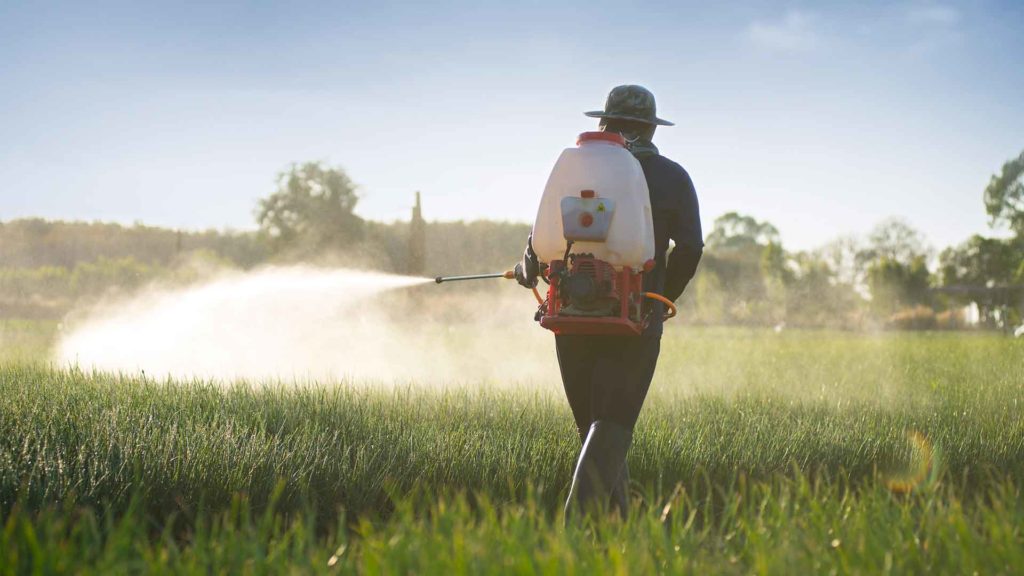Palm Oil Needs Boron
Palm oil is crucial in many food, detergent, and cosmetic products. It requires boron for several key processes in the plant, including pollination, fruit set, and cell wall development. Deficiencies can lead to reduced yield and poor oil quality, which can be further corrected by applying the right amount of boron fertilizer.

Palm oil
Role of Boron in Palm Oil
One of the essential components for cultivating palm oil is boron. It reduces seedless fruitlet and leaf deformities, such as fishbone and hooked leaf. Additionally, the absence of white stripes on leaves, proper fresh fruit bunch production, and improved root growth depend on the boron’s presence.
Symptoms of Boron Deficiency
As with most nutrient deficiencies, the first symptoms of boron deficiency are often seen in new growth. Transverse pinna corrugations and hook leaf, a single or double hook on the pinnae at the tip, are typically the first signs.
More severe boron shortage will develop fasciation, a flattened fan-like development pattern, and the pinnae’s inability to extend. The leaf tissue is delicate, and the leaflets break readily, resulting in leaflet shatter. With blind leaf, the pinnae formation as a tuft of bristles on the frond’s terminal end is another sign of boron shortage.
An extremely severe boron shortage causes fishbone leaves, characterized by extremely tiny, thin pinnae. The final symptom is the disintegration of the developing point which means dry heart rot.
There are few more indications of boron shortage in young seedlings. Older leaves have white streaks and spots that embellish the dark green lamina. Seedlings often exhibit juvenile characteristics, with the full bifurcate leaf staying underdeveloped.
Boron is an essential micronutrient but is only required in minimal amounts. This means that even a slight deficiency can result in serious problems.
Boron Fertilizer to Reduce Boron Deficiency
- Granubor is an excellent material for dry soil mixtures.
- Fertibor is effective in both direct soil treatments and fertilizer mixes.
- Solubor gives you the flexibility to use boron in the solution. It can be sprayed onto the soil or straight to the palms after being dissolved in water, liquid fertilizer, or insecticides.
How Much Boron is Used?
While seeding in a nursery, it is recommended to perform a spray test on a few seeds to determine the proper quantity before applying boron fertilizers to all the plants. This help ensures that plants get the nutrients they need and that you are not over or under-applying fertilizers.
- In general, the suggested concentration for spraying is 13.6 g of Solubor® (20.5% B) in 100 L of water.
- Additionally, Solubor may be used with fungicides or insecticides frequently found in nurseries.
- During pesticide or fungicide spraying, split into three to four applications.
- Borax can be applied throughout germination’s fourth, eighth, and tenth months.
About Palm Oil
Palm oil (Elaeis guineensis) is a highly productive crop. It is an edible vegetable oil extracted from the fruit of the oil palm tree. Beta-carotene levels are high in red palm oil or crude palm oil.
Oil palm consists of both unsaturated and saturated fats. Some also have beta-carotene and vitamin E. These varieties may have antioxidant properties. Bleaching, deodorizing, and neutralizing crude palm oil results in refined palm oil.
Applications
In Food Industry
Because of its high saturated content, oil palm is solid at room temperature in temperate zones, offering it an affordable alternative to butter or hydrogenated vegetable oils for applications requiring solid fat, like the production of pastry dough and baked products. Sometimes a small amount of oil is also used for the calf milk replacer.
In Non-food Industry
Palm oil is widely used in cosmetics and household items. It is the foaming component in almost all soaps, shampoos, and detergents. Most personal care items contain oil constituents, such as soaps, cosmetics, and lotion. Furthermore, within the 200 alternative names for its constituents, only 10% of the names include the term “palm.”
Special Cautions
During Ingestion:
Palm oil is ingested through food. However, a particular type of fat in it can raise cholesterol levels. For this reason, it is important to consume the oil in moderation. It is safe when using it as a medicine for a short period. A daily dose of 7–12 grams for six months seems risk-free.
During Pregnancy:
Palm oil is safe when used as a medicine during the latter three months of pregnancy.
In Children:
As a medicine, children under the age of five can use it daily for a maximum of six months, and children above the age of five can consume it daily for a maximum of twelve months.





